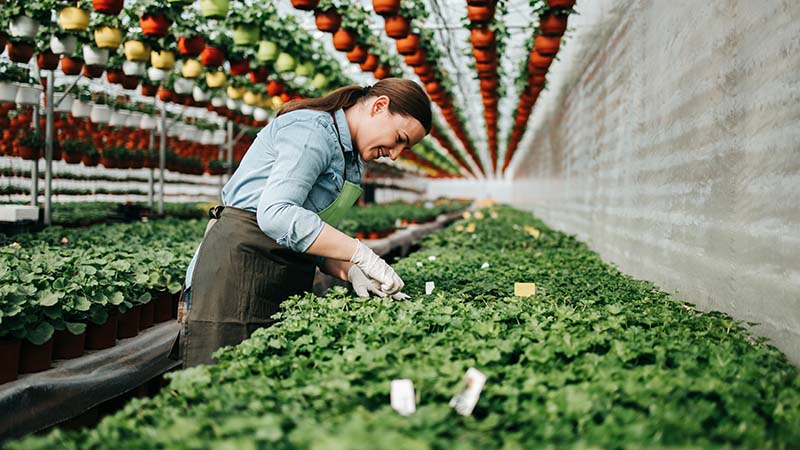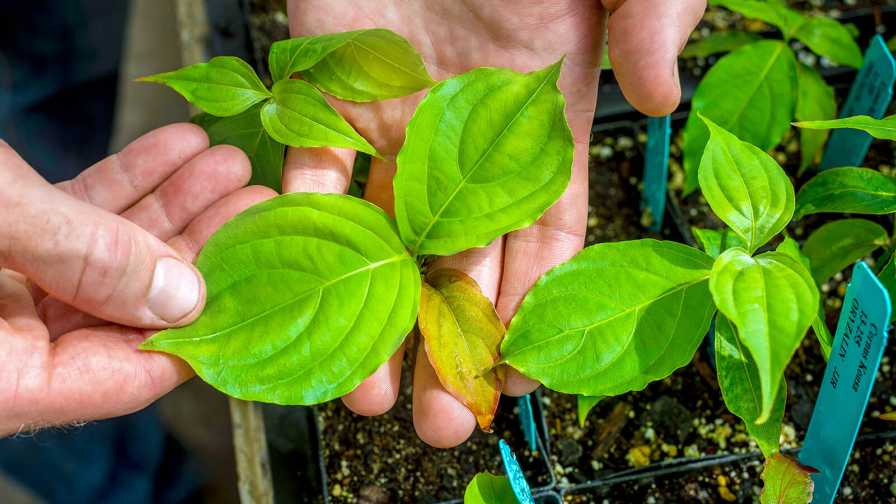The State Of The 2015 Young Plant Market
 As the economy continues to rebound, today’s young plant growers are adapting in new ways in order to stay both competitive and successful for the long term. In fact, this year’s Greenhouse Grower Young Plant Grower survey shows a wide range of investments in anything from energy savings to more efficiencies in labor and production systems.
As the economy continues to rebound, today’s young plant growers are adapting in new ways in order to stay both competitive and successful for the long term. In fact, this year’s Greenhouse Grower Young Plant Grower survey shows a wide range of investments in anything from energy savings to more efficiencies in labor and production systems.
This year there were 92 participants in the survey, which was conducted earlier this summer. Young plant growers were asked about how many units they’ve produced to sell in 2015, with the chart on this page highlighting the 20 largest producers.
In addition, growers answered questions about topics ranging from plug and liner production to transitions from seeds to cuttings (and vice versa) to the types of crops produced.
Newcomers To The List
There are three companies on the list of 2015’s largest producers that were not on the list in 2014: Greenheart Farms in Arizona, Aris Horticulture in Ohio and Hanor Farms in Missouri. Vegetables are the key crop at Greenheart, where about 90 percent of the young plants are sold direct.
At Aris Horticulture, most of the production comes from cuttings used for flowering potted plants that are sold through brokers. According to Christine Kelleher at Aris, the company has made the switch from propane to natural gas and is constantly reviewing order bookings and stock yields to improve efficiency.
| 2015 Rank | Young Plant Growers | 2014 Rank | Units Prepared To Sell In 2015 | Units vs. 2014 |
State |
| 1 | Tagawa Greenhouses | 1 | 450 million | Same | CO |
| 2 | Van de Wetering | 3 | 275 million | Up | NY |
| 3 | Green Circle Growers | 2 | 260 million | Same | OH |
| 4 | Greenheart Farms | n/a | 250 million | n/a | AZ |
| 5 | C. Raker & Sons | 4 | 150 to 160 million | Up | MI |
| 6 | Knox Nursery | 4 | 150 million | Same | FL |
| 6 | Wagner Greenhouses | 4 | 150 million | Same | MN |
| 8 | Floral Plant Growers | 4 | 147 million | Down | WI |
| 9 | Bob’s Market & Greenhouses | 8 | 143 million | Same | WV |
| 10 | Plug Connection | 9 | 135-140 million | Same | CA |
| 11 | Aris Horticulture | n/a | 120-130 million | n/a | OH |
| 12 | Foremost Co. | 10 | 120 million | Same | FL |
| 13 | Speedling | 11 | 110 million | Same | FL |
| 14 | Hanor Farms | n/a | 100-101 million | na | MO |
| 15 | Kube-Pak | 12 | 100 million | Same | NJ |
| 16 | Jolly Farmer | 14 | 90-100 million | Same | Canada |
| 16 | Plainview Growers | 13 | 90-100 million | Same | NJ |
| 18 | Cal Seedling Co. | 15 | 70 million | Same | CA |
| 19 | Grolink Plant Co. | 16 | 60-70 million | Down | CA |
| 20 | Pacific Plug & Liner | 17 | 50-55 million | Down | CA |
Securing Highly Skilled Labor Remains A Challenge
Labor remains the biggest challenge faced by young plant growers, especially as the economy continues to rebound and the demand for a highly skilled labor force becomes more demanding.
One survey respondent said that, “The demand for shipping at the end of February is huge, and to gear up for that time frame is a challenge. It is not the growing of the products; it is the systems and personnel needed to run the order fulfillment properly. Labor is starting to be a challenge with the uptick in the economy.”
One respondent is constantly training and promoting from within. “Growing plugs requires fine attention to detail, and it takes well-trained employees to do it well.”
Here’s what some other young plant growers say are their biggest challenges:
• “Weather, both in order fulfillment and in shipping. We meet the challenge by carefully planning the route the plants will take, zone skipping to FedEx hubs as far away as Tennessee, which also keeps the plants in our temperature-controlled trucks longer, insulating the boxes and finally holding back shipments if it’s too risky.”
• “Getting the rights to propagate new restricted plants due to the quantity of plants we sell.”
• “Our biggest challenge is to have all numbers per variety ready on time for each customer every month, at the correct size. We are now implementing a fully integrated planning software.”
New Varieties, Natural Gas Helps Cut Energy Costs
In many ways, young plant growers absorb winter energy costs for finished grower customers. So what are young plant producers doing to conserve energy and cope with heating costs?
Many are making the switch from propane to natural gas, and one just installed a new gas boiler that has a condensing unit on it. “By doing this, we can grab an additional 5 percent or more of unused BTUs. Our boilers and overall heating system are controlled by our Priva computer for better efficiency.”
Other growers are choosing to breed varieties that need lower temperatures, and many are updating their greenhouses with improved insulation.
“We winterize the greenhouse with styrofoam on the bottom 4 feet of the walls and use a layer of bubble wrap on the roof,” said one respondent.










